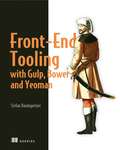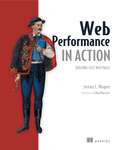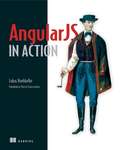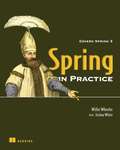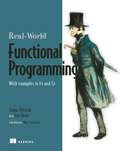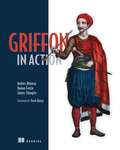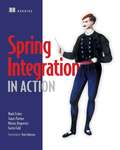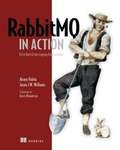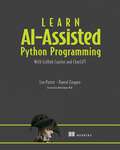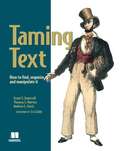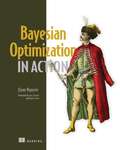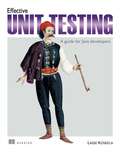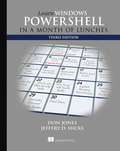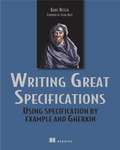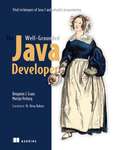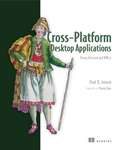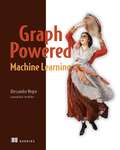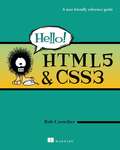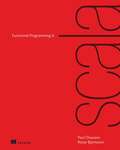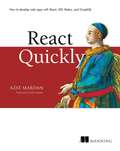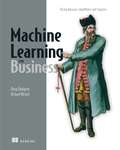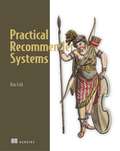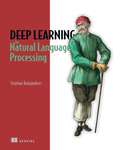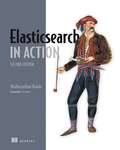- Table View
- List View
Front-End Tooling with Gulp, Bower, and Yeoman
by Stefan BaumgartnerSummaryFront-End Tooling with Gulp, Bower, and Yeoman teaches you how to use and combine these popular tools to set up a customized development workflow from start to finish.Purchase of the print book includes a free eBook in PDF, Kindle, and ePub formats from Manning Publications.About the TechnologyIn large web dev projects, productivity is all about workflow. Great workflow requires tools like Gulp, Bower, and Yeoman that can help you automate the design-build-deploy pipeline. Together, the Yeoman scaffolding tool, Bower dependency manager, and Gulp automation build system radically shorten the time it takes to release web applications.About the BookFront-End Tooling with Gulp, Bower, and Yeoman teaches you how to set up an automated development workflow. You'll start by understanding the big picture of the development process. Then, using patterns and examples, this in-depth book guides you through building a product delivery pipeline using Gulp, Bower, and Yeoman. When you're done, you'll have an intimate understanding of the web development process and the skills you need to create a powerful, customized workflow using these best-of-breed tools.What's InsideMastering web dev workflow patternsAutomating the product delivery pipelineCreating custom workflowsAbout the ReaderThis book is suitable for front-end developers with JavaScript experience.About the AuthorStefan Baumgartner has led front-end teams working across a wide range of development styles and application domains.Table of ContentsPART 1 - A MODERN WORKFLOW FOR WEB APPLICATIONSTooling in a modern front-end workflowGetting started with GulpA Gulp setup for local developmentDependency management with BowerScaffolding with YeomanPART 2 - INTEGRATING AND EXTENDING THE PLATFORMGulp for different environmentsWorking with streamsExtending GulpCreating modules and Bower componentsAdvanced Yeoman generators
Web Performance in Action: Building Fast Web Pages
by Jeremy WagnerSummaryWeb Performance in Action is your companion guide to making websites faster. You'll learn techniques that speed the delivery of your site's assets to the user, increase rendering speed, decrease the overall footprint of your site, as well as how to build a workflow that automates common optimization techniques. Purchase of the print book includes a free eBook in PDF, Kindle, and ePub formats from Manning Publications.About the TechnologyNifty features, hip design, and clever marketing are great, but your website will flop if visitors think it's slow. Network conditions can be unpredictable, and with today's sites being bigger than ever, you need to set yourself apart from the competition by focusing on speed. Achieving a high level of performance is a combination of front-end architecture choices, best practices, and some clever sleight-of-hand. This book will demystify all these topics for you.About the BookWeb Performance in Action is your guide to making fast websites. Packed with "Aha!" moments and critical details, this book teaches you how to create performant websites the right way. You'll master optimal rendering techniques, tips for decreasing your site's footprint, and technologies like HTTP/2 that take your website's speed from merely adequate to seriously fast. Along the way, you'll learn how to create an automated workflow to accomplish common optimization tasks and speed up development in the process. What's InsideFoolproof performance-boosting techniquesOptimizing images and fontsHTTP/2 and how it affects your optimization workflowAbout the ReaderThis book assumes that you're familiar with HTML, CSS, and JavaScript. Many examples make use of Git and Node.js.About the AuthorJeremy Wagner is a professional front-end web developer with over ten years of experience. Foreword by Ethan Marcotte.Table of ContentsUnderstanding web performanceUsing assessment toolsOptimizing CSSUnderstanding critical CSSMaking images responsiveGoing further with imagesFaster fontsKeeping JavaScript lean and fastBoosting performance with service workersFine-tuning asset deliveryLooking to the future with HTTP/2Automating optimization with gulp
AngularJS in Action
by Lukas RuebbelkeSummaryAngularJS in Action covers everything you need to know to get started with the AngularJS framework. As you read, you'll explore all the individual components of the framework and learn how to customize and extend them. You'll discover the emerging patterns for web application architecture and tackle required tasks like communicating with a web server back-end. Along the way, you'll see AngularJS in action by building real world applications with thoroughly commented code.Purchase of the print book includes a free eBook in PDF, Kindle, and ePub formats from Manning Publications.About the TechnologyAngularJS is a JavaScript-based framework that extends HTML, so you can create dynamic, interactive web applications in the same way you create standard static pages. Out of the box, Angular provides most of the functionality you'll need for basic apps, but you won't want to stop there. Intuitive, easy to customize, and test-friendly, Angular practically begs you to build more interesting apps.About the BookAngularJS in Action teaches you everything you need to get started with AngularJS. As you read, you'll learn to build interactive single-page web interfaces, apply emerging patterns like MVVM, and tackle key tasks like communicating with back-end servers. All examples are supported by clear explanations and illustrations along with fully annotated code listings.This book assumes you know at least some JavaScript. No prior exposure to AngularJS is required.What's InsideGet started with AngularJSWrite your own componentsBest practices for application architectureProgressively build a full-featured applicationCovers Angular JS 1.3Sample application updated to the latest version of AngularAbout the AuthorLukas Ruebbelke is a full-time web developer and an active contributor to the AngularJS community.Table of ContentsPART 1 GET ACQUAINTED WITH ANGULARJSHello AngularJSStructuring your AngularJS applicationPART 2 MAKE SOMETHING WITH ANGULARJSViews and controllersModels and servicesDirectivesAnimationsStructuring your site with routesForms and validationsAPPENDIXESSetting up KarmaSetting up a Node.js serverSetting up a Firebase serverRunning the app
Spring in Practice
by Joshua White Willie WheelerSummarySpring in Practice shows you how to tackle the challenges you face when you build Spring-based applications. The book empowers software developers to solve concrete business problems by mapping application-level issues to Spring-centric solutions. It diverges from other cookbooks because it presents the background you need to understand the domain in which a solution applies before it offers the specific steps to solve the problem. About this BookSpring in Practice covers 66 Spring development techniques and the practical issues you will encounter when using them. The book starts with three carefully crafted introductory chapters to get you up to speed on the fundamentals. And then, the core of the book takes you step-by-step through the important, practical techniques you will use no matter what type of application you're building. You'll hone your Spring skills with examples on user accounts, security, NoSQL data stores, and application integration. Along the way, you'll explore Spring-based approaches to domain-specific challenges like CRM, configuration management, and site reliability.What's InsideCovers Spring 3Successful outcomes with integration testingDozens of web app techniques using Spring MVCPractical examples and real-world contextHow to work effectively with dataEach technique highlights something new or interesting about Spring and focuses on that concept in detail. This book assumes you have a good foundation in Java and Java EE. Prior exposure to Spring Framework is helpful but not required.Purchase of the print book includes a free eBook in PDF, Kindle, and ePub formats from Manning Publications.About the AuthorsWillie Wheeler is a Principal Applications Engineer with 16 years of experience in Java/Java EE and Spring Framework. Joshua White is a Solutions Architect in the financial and health services industries. He has worked with Spring Framework since its inception in 2002.Table of ContentsIntroducing Spring: the dependency injection containerData persistence, ORM, and transactionsBuilding web applications with Spring Web MVCBasic web formsEnhancing Spring MVC applications with Web FlowAuthenticating usersAuthorizing user requestsCommunicating with users and customersCreating a rich-text comment engineIntegration testingBuilding a configuration management databaseBuilding an article-delivery engineEnterprise integrationCreating a Spring-based "site-up" framework
Real-World Functional Programming: With examples in F# and C#
by Tomas Petricek Jonathan SkeetFunctional programming languages like F#, Erlang, and Scala are attractingattention as an efficient way to handle the new requirements for programmingmulti-processor and high-availability applications. Microsoft's new F# is a truefunctional language and C# uses functional language features for LINQ andother recent advances.Real-World Functional Programming is a unique tutorial that explores thefunctional programming model through the F# and C# languages. The clearlypresented ideas and examples teach readers how functional programming differsfrom other approaches. It explains how ideas look in F#-a functionallanguage-as well as how they can be successfully used to solve programmingproblems in C#. Readers build on what they know about .NET and learn wherea functional approach makes the most sense and how to apply it effectively inthose cases.The reader should have a good working knowledge of C#. No prior exposure toF# or functional programming is required. Purchase of the print book comes with an offer of a free PDF, ePub, and Kindle eBook from Manning. Also available is all code from the book.
Griffon in Action
by Andres Almiray Danno FerrinSummaryGriffon in Action is a comprehensive tutorial written for Java developers who want a more productive approach to UI development. After a quick Groovy tutorial, you'll immediately dive into Griffon and start building examples that explore its high productivity approach to Swing development.About the TechnologyYou can think of Griffon as Grails for the desktop. It is a Groovy-driven UI framework for the JVM that wraps and radically simplifies Swing. Its declarative style and approachable abstractions are instantly familiar to developers using Grails or JavaFX.About the BookGriffon in Action gets you going quickly. Griffon's convention-over-configuration approach requires minimal code to get an app off the ground, so you can start seeing results immediately. You'll learn how SwingBuilder and other Griffon "builders" provide a coherent DSL-driven development experience. Along the way, you'll explore best practices for structure, architecture, and lifecycle of a Java desktop application.Written for Java developers—no experience with Groovy, Grails, or Swing is required. Purchase of the print book comes with an offer of a free PDF, ePub, and Kindle eBook from Manning. Also available is all code from the book. What's InsideGriffon from the ground upFull compatibility with Griffon 1.0Using SwingBuilder and the other "builders"Practical, real-world examplesJust enough Groovy=======================================Table of ContentsPART 1 GETTING STARTEDWelcome to the Griffon revolutionA closer look at GriffonPART 2 ESSENTIAL GRIFFONModels and bindingCreating a viewUnderstanding controllers and servicesUnderstanding MVC groupsMultithreaded applicationsListening to notificationsTesting your applicationShip it!Working with pluginsEnhanced looksGriffon in front, Grails in the backProductivity tools
Spring Integration in Action
by Mark Fisher Iwein Fuld Jonas Partner Marius BogoeviciSummarySpring Integration in Action is a hands-on guide to Spring-based messaging and integration. After addressing the core messaging patterns, such as those used in transformation and routing, the book turns to the adapters that enable integration with external systems. Readers will explore real-world enterprise integration scenarios using JMS, Web Services, file systems, and email. They will also learn about Spring Integration's support for working with XML. The book concludes with a practical guide to advanced topics such as concurrency, performance, system-management, and monitoring.The book features a foreword by Rod Johnson, Founder of the Spring Network.About the TechnologySpring Integration extends the Spring Framework to support the patterns described in Gregor Hohpe and Bobby Woolf's Enterprise Integration Patterns. Like the Spring Framework itself, it focuses on developer productivity, making it easier to build, test, and maintain enterprise integration solutions.About the BookSpring Integration in Action is an introduction and guide to enterprise integration and messaging using the Spring Integration framework. The book starts off by reviewing core messaging patterns, such as those used in transformation and routing. It then drills down into real-world enterprise integration scenarios using JMS, Web Services, filesystems, email, and more. You'll find an emphasis on testing, along with practical coverage of topics like concurrency, scheduling, system management, and monitoring.This book is accessible to developers who know Java. Experience with Spring and EIP is helpful but not assumed. Purchase of the print book comes with an offer of a free PDF, ePub, and Kindle eBook from Manning. Also available is all code from the book. What's InsideRealistic examplesExpert advice from Spring Integration creatorsDetailed coverage of Spring Integration 2 featuresAbout the AuthorsMark Fisher is the Spring Integration founder and project lead. Jonas Partner, Marius Bogoevici, and Iwein Fuld have all been project committers and are recognized experts on Spring and Spring Integration.Table of ContentsPART 1 BACKGROUNDIntroduction to Spring IntegrationEnterprise integration fundamentals 24PART 2 MESSAGINGMessages and channelsMessage EndpointsGetting down to businessGo beyond sequential processing: routing and filteringSplitting and aggregating messagesPART 3 INTEGRATING SYSTEMSHandling messages with XML payloadsSpring Integration and the Java Message ServiceEmail-based integrationFilesystem integrationSpring Integration and web servicesChatting and tweetingPART 4 ADVANCED TOPICSMonitoring and managementManaging scheduling and concurrencyBatch applications and enterprise integrationScaling messaging applications with OSGiTesting
Sencha Touch in Action
by Jesus Garcia Anthony De Moss Mitchell SimoensSummarySencha Touch in Action is the definitive guide to developing applications with Sencha Touch. You'll begin with basic design principles for building great mobile applications, and then explore the features of Sencha Touch that bring those ideas to life. You'll learn how and why objects operate in the framework as you work through several real-world examples. This book also promotes the emerging best practices for mobile web development, from widget implementation to developing an application with the Sencha Touch MVC framework. Updated for Sencha Touch 2.About the TechnologyThe Sencha Touch framework makes it easy to build cross-platform mobile apps using HTML5 and JavaScript. It offers numerous features that mimic native mobile APIs and an MVC architecture that feels right at home for application developers. So you get the power and richness of native apps and the convenience of standard web tools.About this BookSencha Touch in Action is a complete guide for developers of native-quality mobile Sencha Touch applications. You'll explore real-world examples as you master this impressive framework from the ground up. The book shows you good practices for mobile web development, from widget implementation to the structure of MVC applications.The book requires basic JavaScript skills. It assumes no experience with Sencha Touch or Ext JS.What's InsideCovers Sencha Touch 2Build on your existing web dev skillsCreate mobile web apps that feel like native appsExtend enterprise apps to mobile clientsPurchase of the print book includes a free eBook in PDF, Kindle, and ePub formats from Manning Publications.About the AuthorsJay Garcia is a popular speaker, Sencha community advocate, and author of Ext JS in Action. Anthony De Moss is a professional web and mobile developer. Mitchell Simoens is a Sencha developer supporting the Sencha Touch and Ext JS products.Table of ContentsPART 1 INTRODUCTION TO SENCHA TOUCHIntroducing Sencha TouchUsing Sencha Touch for the first timeSencha Touch foundationsPART 2 BUILDING MOBILE USER INTERFACESMastering the building blocksToolbars, buttons, and docked itemsGetting the user's attentionData stores and viewsWorking with formsMaps and mediaPART 3 CONSTRUCTING AN APPLICATIONClass system foundationsBuilding Sencha Touch applications
RabbitMQ in Action: Distributed Messaging for Everyone
by Jason WilliamsSummaryRabbitMQ in Action is a fast-paced run through building and managing scalable applications using the RabbitMQ messaging server. It starts by explaining how message queuing works, its history, and how RabbitMQ fits in. Then it shows you real-world examples you can apply to your own scalability and interoperability challenges.About the TechnologyThere's a virtual switchboard at the core of most large applications where messages race between servers, programs, and services. RabbitMQ is an efficient and easy-to-deploy queue that handles this message traffic effortlessly in all situations, from web startups to massive enterprise systems.About the BookRabbitMQ in Action teaches you to build and manage scalable applications in multiple languages using the RabbitMQ messaging server. It's a snap to get started. You'll learn how message queuing works and how RabbitMQ fits in. Then, you'll explore practical scalability and interoperability issues through many examples. By the end, you'll know how to make Rabbit run like a well-oiled machine in a 24 x 7 x 365 environment.Written for developers familiar with Python, PHP, Java, .NET, or any other modern programming language. No RabbitMQ experience required. Purchase of the print book comes with an offer of a free PDF, ePub, and Kindle eBook from Manning. Also available is all code from the book. What's InsideLearn fundamental messaging design patternsUse patterns for on-demand scalabilityGlue a PHP frontend to a backend written in anythingImplement a PubSub-alerting service in 30 minutes flatConfigure RabbitMQ's built-in clusteringMonitor, manage, extend, and tune RabbitMQ============================================Table of ContentsPulling RabbitMQ out of the hatUnderstanding messagingRunning and administering RabbitSolving problems with Rabbit: coding and patternsClustering and dealing with failureWriting code that survives failureWarrens and Shovels: failover and replicationAdministering RabbitMQ from the WebControlling Rabbit with the REST APIMonitoring: Houston, we have a problemSupercharging and securing your Rabbit Smart Rabbits: extending RabbitMQ
Learn AI-assisted Python Programming: With GitHub Copilot and ChatGPT
by Leo PorterWriting computer programs in Python just got a lot easier! Use AI-assisted coding tools like GitHub Copilot and ChatGPT to turn your ideas into applications faster than ever.AI has changed the way we write computer programs. With tools like Copilot and ChatGPT, you can describe what you want in plain English, and watch your AI assistant generate the code right before your eyes. It&’s perfect for beginners, or anyone who&’s struggled with the steep learning curve of traditional programming. In Learn AI-Assisted Python Programming: With GitHub Copilot and ChatGPT you&’ll learn how to: Write fun and useful Python applications—no programming experience required! Use the Copilot AI coding assistant to create Python programs Write prompts that tell Copilot exactly what to do Read Python code and understand what it does Test your programs to make sure they work the way you want them to Fix code with prompt engineering or human tweaks Apply Python creatively to help out on the job Learn AI-Assisted Python Programming: With GitHub Copilot and ChatGPT is a hands-on beginner&’s guide that is written by two esteemed computer science university professors. It teaches you everything you need to start programming Python in an AI-first world. You&’ll hit the ground running, writing prompts that tell your AI-assistant exactly what you want your programs to do. Along the way, you&’ll pick up the essentials of Python programming and practice the higher-level thinking you&’ll need to create working apps for data analysis, automating tedious tasks, and even video games. Foreword by Beth Simon, Ph.D. About the technology The way people write computer programs has changed forever. Using GitHub Copilot, you describe in plain English what you want your program to do, and the AI generates it instantly. About the book This book shows you how to create and improve Python programs using AI—even if you&’ve never written a line of computer code before. Spend less time on the slow, low-level programming details and instead learn how an AI assistant can bring your ideas to life immediately. As you go, you&’ll even learn enough of the Python language to understand and improve what your AI assistant creates. What's inside Prompts for working code Tweak code manually and with AI help AI-test your programs Let AI handle tedious details About the reader If you can move files around on your computer and install new programs, you can learn to write useful software! About the author Dr. Leo Porter is a Teaching Professor at UC San Diego. Dr. Daniel Zingaro is an Associate Teaching Professor at the University of Toronto. The technical editor on this book was Peter Morgan. Table of Contents 1 Introducing AI-assisted programming with Copilot 2 Getting started with Copilot 3 Designing functions 4 Reading Python code – Part 1 5 Reading Python Code – Part 2 6 Testing and prompt engineering 7 Problem decomposition 8 Debugging and better understanding your code 9 Automating tedious tasks 10 Making some games 11 Future directions
Taming Text: How to Find, Organize, and Manipulate It
by Grant Ingersoll Thomas S. Morton Drew FarrisSummaryTaming Text, winner of the 2013 Jolt Awards for Productivity, is a hands-on, example-driven guide to working with unstructured text in the context of real-world applications. This book explores how to automatically organize text using approaches such as full-text search, proper name recognition, clustering, tagging, information extraction, and summarization. The book guides you through examples illustrating each of these topics, as well as the foundations upon which they are built.About this BookThere is so much text in our lives, we are practically drowningin it. Fortunately, there are innovative tools and techniquesfor managing unstructured information that can throw thesmart developer a much-needed lifeline. You'll find them in thisbook.Taming Text is a practical, example-driven guide to working withtext in real applications. This book introduces you to useful techniques like full-text search, proper name recognition,clustering, tagging, information extraction, and summarization.You'll explore real use cases as you systematically absorb thefoundations upon which they are built.Written in a clear and concise style, this book avoids jargon, explainingthe subject in terms you can understand without a backgroundin statistics or natural language processing. Examples arein Java, but the concepts can be applied in any language.Written for Java developers, the book requires no prior knowledge of GWT. Purchase of the print book comes with an offer of a free PDF, ePub, and Kindle eBook from Manning. Also available is all code from the book. Winner of 2013 Jolt Awards: The Best Books—one of five notable books every serious programmer should read.What's InsideWhen to use text-taming techniquesImportant open-source libraries like Solr and MahoutHow to build text-processing applicationsAbout the AuthorsGrant Ingersoll is an engineer, speaker, and trainer, a Lucenecommitter, and a cofounder of the Mahout machine-learning project. Thomas Morton is the primary developer of OpenNLP and Maximum Entropy. Drew Farris is a technology consultant, software developer, and contributor to Mahout,Lucene, and Solr."Takes the mystery out of verycomplex processes."—From the Foreword by Liz Liddy, Dean, iSchool, Syracuse UniversityTable of ContentsGetting started taming textFoundations of taming textSearchingFuzzy string matchingIdentifying people, places, and thingsClustering textClassification, categorization, and taggingBuilding an example question answering systemUntamed text: exploring the next frontier
Bayesian Optimization in Action (In Action)
by Quan NguyenBayesian optimization helps pinpoint the best configuration for your machine learning models with speed and accuracy. Put its advanced techniques into practice with this hands-on guide.In Bayesian Optimization in Action you will learn how to: Train Gaussian processes on both sparse and large data sets Combine Gaussian processes with deep neural networks to make them flexible and expressive Find the most successful strategies for hyperparameter tuning Navigate a search space and identify high-performing regions Apply Bayesian optimization to cost-constrained, multi-objective, and preference optimization Implement Bayesian optimization with PyTorch, GPyTorch, and BoTorch Bayesian Optimization in Action shows you how to optimize hyperparameter tuning, A/B testing, and other aspects of the machine learning process by applying cutting-edge Bayesian techniques. Using clear language, illustrations, and concrete examples, this book proves that Bayesian optimization doesn&’t have to be difficult! You&’ll get in-depth insights into how Bayesian optimization works and learn how to implement it with cutting-edge Python libraries. The book&’s easy-to-reuse code samples let you hit the ground running by plugging them straight into your own projects. Forewords by Luis Serrano and David Sweet. About the technology In machine learning, optimization is about achieving the best predictions—shortest delivery routes, perfect price points, most accurate recommendations—in the fewest number of steps. Bayesian optimization uses the mathematics of probability to fine-tune ML functions, algorithms, and hyperparameters efficiently when traditional methods are too slow or expensive. About the book Bayesian Optimization in Action teaches you how to create efficient machine learning processes using a Bayesian approach. In it, you&’ll explore practical techniques for training large datasets, hyperparameter tuning, and navigating complex search spaces. This interesting book includes engaging illustrations and fun examples like perfecting coffee sweetness, predicting weather, and even debunking psychic claims. You&’ll learn how to navigate multi-objective scenarios, account for decision costs, and tackle pairwise comparisons. What's inside Gaussian processes for sparse and large datasets Strategies for hyperparameter tuning Identify high-performing regions Examples in PyTorch, GPyTorch, and BoTorch About the reader For machine learning practitioners who are confident in math and statistics. About the author Quan Nguyen is a research assistant at Washington University in St. Louis. He writes for the Python Software Foundation and has authored several books on Python programming. Table of Contents 1 Introduction to Bayesian optimization 2 Gaussian processes as distributions over functions 3 Customizing a Gaussian process with the mean and covariance functions 4 Refining the best result with improvement-based policies 5 Exploring the search space with bandit-style policies 6 Leveraging information theory with entropy-based policies 7 Maximizing throughput with batch optimization 8 Satisfying extra constraints with constrained optimization 9 Balancing utility and cost with multifidelity optimization 10 Learning from pairwise comparisons with preference optimization 11 Optimizing multiple objectives at the same time 12 Scaling Gaussian processes to large datasets 13 Combining Gaussian processes with neural networks
Effective Unit Testing: A guide for Java developers
by Lasse KoskelaSummaryEffective Unit Testing is written to show how to write good tests—tests that are concise and to the point, expressive, useful, and maintainable. Inspired by Roy Osherove's bestselling The Art of Unit Testing, this book focuses on tools and practices specific to the Java world. It introduces you to emerging techniques like behavior-driven development and specification by example, and shows you how to add robust practices into your toolkit.About TestingTest the components before you assemble them into a full application, and you'll get better software. For Java developers, there's now a decade of experience with well-crafted tests that anticipate problems, identify known and unknown dependencies in the code, and allow you to test components both in isolation and in the context of a full application.About this BookEffective Unit Testing teaches Java developers how to write unit tests that are concise, expressive, useful, and maintainable. Offering crisp explanations and easy-to-absorb examples, it introduces emerging techniques like behavior-driven development and specification by example.Programmers who are already unit testing will learn the current state of the art. Those who are new to the game will learn practices that will serve them well for the rest of their career. Purchase of the print book comes with an offer of a free PDF, ePub, and Kindle eBook from Manning. Also available is all code from the book. About the AuthorLasse Koskela is a coach, trainer, consultant, and programmer. He hacks on open source projects, helps companies improve their productivity, and speaks frequently at conferences around the world. Lasse is the author of Test Driven, also published by Manning.What's InsideA thorough introduction to unit testingChoosing best-of-breed toolsWriting tests using dynamic languagesEfficient test automationTable of ContentsPART 1 FOUNDATIONSThe promise of good testsIn search of goodTest doublesPART 2 CATALOGReadabilityMaintainabilityTrustworthinessPART 3 DIVERSIONSTestable designWriting tests in other JVM languagesSpeeding up test execution
Learn Windows PowerShell in a Month of Lunches
by Don JonesSummaryLearn Windows PowerShell in a Month of Lunches, Third Edition is an innovative tutorial designed for busy IT professionals. This updated edition covers PowerShell features that run on Windows 7, Windows Server 2008 R2 and later, PowerShell v3 and later, and includes v5 features like PowerShellGet.Purchase of the print book includes a free eBook in PDF, Kindle, and ePub formats from Manning Publications.About the TechnologyPowerShell is both a scripting language and an administrative shell that lets you control and automate nearly every aspect of Windows. It accepts and executes commands interactively and you can write scripts to manage most Windows servers like Exchange, IIS, and SharePoint, as well as online services like Azure and Office 365.About the BookLearn Windows PowerShell in a Month of Lunches, Third Edition is an innovative tutorial designed for busy IT professionals. Just set aside one hour a day - lunchtime would be perfect - for a month, and you'll be automating Windows tasks faster than you ever thought possible. This updated edition covers PowerShell features that run on Windows 7, Windows Server 2008 R2 and later, PowerShell v3 and later, and includes v5 features like PowerShellGet. What's InsideLearn PowerShell from the beginning, no experience required!Covers PowerShell v3 and up, Windows 7, and Windows Server 2008 R2 and laterEach lesson takes you an hour or lessAbout the ReaderExperience with Windows administration is helpful. No programming or scripting experience needed.About the AuthorVeteran PowerShell MVPs Don Jones and Jeffery Hicks bring years as successful trainers to this concise, easy-to-follow book.Table of ContentsBefore you beginMeet PowerShellUsing the help systemRunning commandsWorking with providersThe pipeline: connecting commandsAdding commandsObjects: data by another nameThe pipeline, deeperFormatting - and why it's done on the rightFiltering and comparisonsA practical interludeRemote control: one-to-one, and one-to-manyUsing Windows Management Instrumentation and CIMMultitasking with background jobsWorking with many objects, one at a timeSecurity alert!Variables: a place to store your stuffInput and outputSessions: remote control with less workYou call this scripting?Improving your parameterized scriptAdvanced remoting configurationUsing regular expressions to parse text filesAdditional random tips, tricks, and techniquesUsing someone else's scriptNever the endPowerShell cheat sheet
Writing Great Specifications: Using Specification by Example and Gherkin
by Kamil NiciejaSummaryWriting Great Specifications is an example-rich tutorial that teaches you how to write good Gherkin specification documents that take advantage of the benefits of specification by example. Foreword written by Gojko Adzic.Purchase of the print book includes a free eBook in PDF, Kindle, and ePub formats from Manning Publications.About the TechnologyThe clearest way to communicate a software specification is to provide examples of how it should work. Turning these story-based descriptions into a well-organized dev plan is another matter. Gherkin is a human-friendly, jargon-free language for documenting a suite of examples as an executable specification. It fosters efficient collaboration between business and dev teams, and it's an excellent foundation for the specification by example (SBE) process.About the BookWriting Great Specifications teaches you how to capture executable software designs in Gherkin following the SBE method. Written for both developers and non-technical team members, this practical book starts with collecting individual feature stories and organizing them into a full, testable spec. You'll learn to choose the best scenarios, write them in a way that anyone can understand, and ensure they can be easily updated by anyone.management. What's InsideReading and writing GherkinDesigning story-based test casesTeam CollaborationManaging a suite of Gherkin documentsAbout the ReaderPrimarily written for developers and architects, this book is accessible to any member of a software design team.About the AuthorKamil Nicieja is a seasoned engineer, architect, and project manager with deep expertise in Gherkin and SBE.Table of contentsIntroduction to specification by example and Gherkin PART 1 - WRITING EXECUTABLE SPECIFICATIONS WITH EXAMPLESThe specification layer and the automation layer Mastering the Given-When-Then template The basics of scenario outlines Choosing examples for scenario outlines The life cycle of executable specifications Living documentation PART 2 - MANAGING SPECIFICATION SUITES Organizing scenarios into a specification suite Refactoring features into abilities and business needs Building a domain-driven specification suite Managing large projects with bounded contexts
Arduino in Action
by Joshua Noble Martin Evans Jordan HochenbaumSummaryArduino in Action is a hands-on guide to prototyping and building electronics using the Arduino platform. Suitable for both beginners and advanced users, this easy-to-follow book begins with the basics and then systematically guides you through projects ranging from your first blinking LED through connecting Arduino to devices like game controllers or your iPhone.About the TechnologyArduino is an open source do-it-yourself electronics platform that supports a mind-boggling collection of sensors and actuators you can use to build anything you can imagine. Even if you've never attempted a hardware project, this easy-to-follow book will guide you from your first blinking LED through connecting Arduino to your iPhone.About this BookArduino in Action is a hands-on guide to prototyping and building DIY electronics. You'll start with the basics—unpacking your board and using a simple program to make something happen. Then, you'l attempt progressively more complex projects as you connect Arduino to motors, LCD displays, Wi-Fi, GPS, and Bluetooth. You'll explore input/output sensors, including ultrasound, infrared, and light, and then use them for tasks like robotic obstacle avoidance.Arduino programs look a lot like C or C++, so some programming skill is helpful.What's InsideGetting started with Arduino—no experience required!Writing programs for ArduinoSensing and responding to eventsRobots, flying vehicles, Twitter machines, LCD displays, and more!Purchase of the print book includes a free eBook in PDF, Kindle, and ePub formats from Manning Publications.About the AuthorsMartin Evans is a professional developer, a lifelong electronics enthusiast, and the creator of an Arduino-based underwater ROV. Joshua Noble is an author and creative technologist who works with smart spaces. Jordan Hochenbaum uses Arduino to explore musical expression and creative interaction.Table of ContentsPart 1 Getting startedChapter 1 Hello ArduinoChapter 2 Digital input and outputChapter 3 Simple projects: input and outputPart 2 Putting Arduino to workChapter 4 Extending ArduinoChapter 5 Arduino in motionChapter 6 Object detectionChapter 7 LCD displaysChapter 8 CommunicationsChapter 9 Game onChapter 10 Integrating the Arduino with iOSChapter 11 Making wearablesChapter 12 Adding shieldsChapter 13 Software integration
Cross-Platform Desktop Applications: Using Node, Electron, and NW.js
by Paul JensenSummaryCross-Platform Desktop Applications guides you step-by-step through creating Node.js desktop applications with NW.js and Electron from GitHub. Foreword by Cheng Zhao, creator of Electron.Purchase of the print book includes a free eBook in PDF, Kindle, and ePub formats from Manning Publications.About the TechnologyDesktop application development has traditionally required high-level programming languages and specialized frameworks. With Electron and NW.js, you can apply your existing web dev skills to create desktop applications using only HTML, CSS, and JavaScript. And those applications will work across Windows, Mac, and Linux, radically reducing development and training time.About the BookCross-Platform Desktop Applications guides you step by step through the development of desktop applications using Electron and NW.js. This example-filled guide shows you how to create your own file explorer, and then steps through some of the APIs provided by the frameworks to work with the camera, access the clipboard, make a game with keyboard controls, and build a Twitter desktop notification tool. You'll then learn how to test your applications, and debug and package them as binaries for various OSs.What's InsideCreate a selfie app with the desktop cameraLearn how to test Electron apps with DevtronLearn how to use Node.js with your applicationAbout the ReaderWritten for developers familiar with HTML, CSS, and JavaScript.About the AuthorPaul Jensen works at Starcount and lives in London, UK.Table of ContentsPART 1 - WELCOME TO NODE.JS DESKTOP APPLICATION DEVELOPMENTIntroducing Electron and NW.jsLaying the foundation for your first desktop applicationBuilding your first desktop applicationShipping your first desktop applicationPART 2 - DIVING DEEPERUsing Node.js within NW.js and ElectronExploring NW.js and Electron's internalsPART 3 - MASTERING NODE.JS DESKTOP APPLICATION DEVELOPMENTControlling how your desktop app is displayedCreating tray applicationsCreating application and context menusDragging and dropping files and crafting the UIUsing a webcam in your applicationStoring app dataCopying and pasting contents from the clipboardBinding on keyboard shortcutsMaking desktop notificationsPART 4 - GETTING READY TO RELEASETesting desktop appsImproving app performance with debuggingPackaging the application for the wider world
Graph-Powered Machine Learning
by Alessandro NegroUpgrade your machine learning models with graph-based algorithms, the perfect structure for complex and interlinked data.Summary In Graph-Powered Machine Learning, you will learn: The lifecycle of a machine learning project Graphs in big data platforms Data source modeling using graphs Graph-based natural language processing, recommendations, and fraud detection techniques Graph algorithms Working with Neo4J Graph-Powered Machine Learning teaches to use graph-based algorithms and data organization strategies to develop superior machine learning applications. You&’ll dive into the role of graphs in machine learning and big data platforms, and take an in-depth look at data source modeling, algorithm design, recommendations, and fraud detection. Explore end-to-end projects that illustrate architectures and help you optimize with best design practices. Author Alessandro Negro&’s extensive experience shines through in every chapter, as you learn from examples and concrete scenarios based on his work with real clients! Purchase of the print book includes a free eBook in PDF, Kindle, and ePub formats from Manning Publications. About the technology Identifying relationships is the foundation of machine learning. By recognizing and analyzing the connections in your data, graph-centric algorithms like K-nearest neighbor or PageRank radically improve the effectiveness of ML applications. Graph-based machine learning techniques offer a powerful new perspective for machine learning in social networking, fraud detection, natural language processing, and recommendation systems. About the book Graph-Powered Machine Learning teaches you how to exploit the natural relationships in structured and unstructured datasets using graph-oriented machine learning algorithms and tools. In this authoritative book, you&’ll master the architectures and design practices of graphs, and avoid common pitfalls. Author Alessandro Negro explores examples from real-world applications that connect GraphML concepts to real world tasks. What's inside Graphs in big data platforms Recommendations, natural language processing, fraud detection Graph algorithms Working with the Neo4J graph database About the reader For readers comfortable with machine learning basics. About the author Alessandro Negro is Chief Scientist at GraphAware. He has been a speaker at many conferences, and holds a PhD in Computer Science. Table of Contents PART 1 INTRODUCTION 1 Machine learning and graphs: An introduction 2 Graph data engineering 3 Graphs in machine learning applications PART 2 RECOMMENDATIONS 4 Content-based recommendations 5 Collaborative filtering 6 Session-based recommendations 7 Context-aware and hybrid recommendations PART 3 FIGHTING FRAUD 8 Basic approaches to graph-powered fraud detection 9 Proximity-based algorithms 10 Social network analysis against fraud PART 4 TAMING TEXT WITH GRAPHS 11 Graph-based natural language processing 12 Knowledge graphs
Hello! HTML5 & CSS3: A User Friendly Reference Guide
by Rob CrowtherSummaryHello! HTML5 & CSS3 is written for the web designer or developer who wants a fast, example-oriented introduction to the new HTML and CSS features. This snappy, user-friendly, and fun guide will get you started right away.About this BookWhether you're building web pages, mobile apps, or desktop apps, you need to learn HTML5 and CSS3. So why wait? Hello! HTML5 & CSS3 is a smart, snappy, and fun way to get started now.In this example-rich guide to HTML5 and CSS3, you'll start with a user-friendly introduction to HTML5 markup and then take a quick tour through forms, graphics, drag-and-drop, multimedia, and more. Next, you'll explore CSS3, including new features like drop shadows, borders, colors, gradients, and backgrounds. Every step of the way, you'll find hands-on examples, both large and small, to help you learn by doing. Purchase of the print book comes with an offer of a free PDF, ePub, and Kindle eBook from Manning. Also available is all code from the book.What's insideEasy-to-follow intro to HTML5 and CSS3Fully illustrated and loaded with examplesDesigned for low-stress learningNo prior experience needed!Table of ContentsPART 1 LEARNING HTML5Introducing HTML5 markupHTML5 formsDynamic graphicsAudio and videoBrowser-based APIsNetwork and location APIsPART 2 LEARNING CSS3New CSS language featuresLayout with CSS3Motion and colorBorders and backgrounds with CSS3Text and fonts
Functional Programming in Scala
by Paul Chiusano Runar BjarnasonSummaryFunctional Programming in Scala is a serious tutorial for programmers looking to learn FP and apply it to the everyday business of coding. The book guides readers from basic techniques to advanced topics in a logical, concise, and clear progression. In it, you'll find concrete examples and exercises that open up the world of functional programming.Purchase of the print book includes a free eBook in PDF, Kindle, and ePub formats from Manning Publications.About the TechnologyFunctional programming (FP) is a style of software development emphasizing functions that don't depend on program state. Functional code is easier to test and reuse, simpler to parallelize, and less prone to bugs than other code. Scala is an emerging JVM language that offers strong support for FP. Its familiar syntax and transparent interoperability with Java make Scala a great place to start learning FP. About the BookFunctional Programming in Scala is a serious tutorial for programmers looking to learn FP and apply it to their everyday work. The book guides readers from basic techniques to advanced topics in a logical, concise, and clear progression. In it, you'll find concrete examples and exercises that open up the world of functional programming.This book assumes no prior experience with functional programming. Some prior exposure to Scala or Java is helpful. What's InsideFunctional programming conceptsThe whys and hows of FPHow to write multicore programsExercises and checks for understandingAbout the AuthorsPaul Chiusano and Rúnar Bjarnason are recognized experts in functional programming with Scala and are core contributors to the Scalaz library.Table of ContentsPART 1 INTRODUCTION TO FUNCTIONAL PROGRAMMINGWhat is functional programming? Getting started with functional programming in ScalaFunctional data structuresHandling errors without exceptionsStrictness and lazinessPurely functional state PART 2 FUNCTIONAL DESIGN AND COMBINATOR LIBRARIESPurely functional parallelismProperty-based testingParser combinatorsPART 3 COMMON STRUCTURES IN FUNCTIONAL DESIGNMonoidsMonadsApplicative and traversable functorsPART 4 EFFECTS AND I/OExternal effects and I/OLocal effects and mutable stateStream processing and incremental I/O
React Quickly: Painless web apps with React, JSX, Redux, and GraphQL
by Azat MardanSummaryReact Quickly is for anyone who wants to learn React.js fast. This hands-on book teaches you the concepts you need with lots of examples, tutorials, and a large main project that gets built throughout the book. Purchase of the print book includes a free eBook in PDF, Kindle, and ePub formats from Manning Publications.About the TechnologySuccessful user interfaces need to be visually interesting, fast, and flowing. The React.js JavaScript library supercharges view-heavy web applications by improving data flow between UI components. React sites update visual elements efficiently and smoothly, minimizing page reloads. React is developer friendly, with a strong ecosystem to support the dev process along the full application stack. And because it's all JavaScript, React is instantly familiar. About the BookReact Quickly is the tutorial for web developers who want to get started fast with React.js. Following carefully chosen and clearly explained examples, you'll learn React development using your existing JavaScript and web dev skills. You'll explore a host of different projects as you learn about web components, forms, and data. What's InsideMaster React fundamentalsBuild full web apps with data and routingTest componentsOptimize React appsAbout the Reader This book is for developers comfortable building web applications with JavaScript. About the AuthorAzat Mardan is a Tech Fellow at Capital One with extensive experience using and teaching JavaScript and Node, and author of several books on JavaScript, Node, React, and Express.Table of ContensPART 1 - REACT FOUNDATIONMeeting ReactBaby steps with ReactIntroduction to JSXMaking React interactive with statesReact component lifecycle eventsHandling events in ReactWorking with forms in ReactScaling React componentsProject: Menu componentProject: Tooltip componentProject: Timer componentPART 2 - REACT ARCHITECTURE The Webpack build toolReact routingWorking with data using ReduxWorking with data using GraphQLUnit testing React with JestReact on Node and Universal JavaScriptProject: Building a bookstore with React RouterProject: Checking passwords with JestProject: Implementing autocomplete with Jest, Express, and MongoDBAPPENDIXESAppendix A - Installing applications used in this bookAppendix B - React cheatsheetAppendix C - Express.js cheatsheetAppendix D - MongoDB and Mongoose cheatsheetAppendix E - ES6 for success
Machine Learning for Business: Using Amazon SageMaker and Jupyter
by Doug Hudgeon Richard NicholSummary Imagine predicting which customers are thinking about switching to a competitor or flagging potential process failures before they happen Think about the benefits of forecasting tedious business processes and back-office tasks Envision quickly gauging customer sentiment from social media content (even large volumes of it). Consider the competitive advantage of making decisions when you know the most likely future events Machine learning can deliver these and other advantages to your business, and it&’s never been easier to get started! Purchase of the print book includes a free eBook in PDF, Kindle, and ePub formats from Manning Publications. About the technology Machine learning can deliver huge benefits for everyday business tasks. With some guidance, you can get those big wins yourself without complex math or highly paid consultants! If you can crunch numbers in Excel, you can use modern ML services to efficiently direct marketing dollars, identify and keep your best customers, and optimize back office processes. This book shows you how. About the book Machine Learning for Business teaches business-oriented machine learning techniques you can do yourself. Concentrating on practical topics like customer retention, forecasting, and back office processes, you&’ll work through six projects that help you form an ML-for-business mindset. To guarantee your success, you&’ll use the Amazon SageMaker ML service, which makes it a snap to turn your questions into results. What's inside Identifying tasks suited to machine learning Automating back office processes Using open source and cloud-based tools Relevant case studies About the reader For technically inclined business professionals or business application developers. About the author Doug Hudgeon and Richard Nichol specialize in maximizing the value of business data through AI and machine learning for companies of any size. Table of Contents: PART 1 MACHINE LEARNING FOR BUSINESS 1 ¦ How machine learning applies to your business PART 2 SIX SCENARIOS: MACHINE LEARNING FOR BUSINESS 2 ¦ Should you send a purchase order to a technical approver? 3 ¦ Should you call a customer because they are at risk of churning? 4 ¦ Should an incident be escalated to your support team? 5 ¦ Should you question an invoice sent by a supplier? 6 ¦ Forecasting your company&’s monthly power usage 7 ¦ Improving your company&’s monthly power usage forecast PART 3 MOVING MACHINE LEARNING INTO PRODUCTION 8 ¦ Serving predictions over the web 9 ¦ Case studies
Practical Recommender Systems
by Kim FalkSummaryOnline recommender systems help users find movies, jobs, restaurants-even romance! There's an art in combining statistics, demographics, and query terms to achieve results that will delight them. Learn to build a recommender system the right way: it can make or break your application!Purchase of the print book includes a free eBook in PDF, Kindle, and ePub formats from Manning Publications.About the TechnologyRecommender systems are everywhere, helping you find everything from movies to jobs, restaurants to hospitals, even romance. Using behavioral and demographic data, these systems make predictions about what users will be most interested in at a particular time, resulting in high-quality, ordered, personalized suggestions. Recommender systems are practically a necessity for keeping your site content current, useful, and interesting to your visitors.About the BookPractical Recommender Systems explains how recommender systems work and shows how to create and apply them for your site. After covering the basics, you'll see how to collect user data and produce personalized recommendations. You'll learn how to use the most popular recommendation algorithms and see examples of them in action on sites like Amazon and Netflix. Finally, the book covers scaling problems and other issues you'll encounter as your site grows.What's insideHow to collect and understand user behaviorCollaborative and content-based filteringMachine learning algorithms Real-world examples in PythonAbout the ReaderReaders need intermediate programming and database skills.About the AuthorKim Falk is an experienced data scientist who works daily with machine learning and recommender systems.Table of ContentsPART 1 - GETTING READY FOR RECOMMENDER SYSTEMSWhat is a recommender? User behavior and how to collect it Monitoring the system Ratings and how to calculate themNon-personalized recommendationsThe user (and content) who came in from the coldPART 2 - RECOMMENDER ALGORITHMSFinding similarities among users and among contentCollaborative filtering in the neighborhoodEvaluating and testing your recommenderContent-based filteringFinding hidden genres with matrix factorizationTaking the best of all algorithms: implementing hybrid recommendersRanking and learning to rankFuture of recommender systems
Deep Learning for Natural Language Processing
by Stephan RaaijmakersExplore the most challenging issues of natural language processing, and learn how to solve them with cutting-edge deep learning!Inside Deep Learning for Natural Language Processing you&’ll find a wealth of NLP insights, including: An overview of NLP and deep learning One-hot text representations Word embeddings Models for textual similarity Sequential NLP Semantic role labeling Deep memory-based NLP Linguistic structure Hyperparameters for deep NLP Deep learning has advanced natural language processing to exciting new levels and powerful new applications! For the first time, computer systems can achieve "human" levels of summarizing, making connections, and other tasks that require comprehension and context. Deep Learning for Natural Language Processing reveals the groundbreaking techniques that make these innovations possible. Stephan Raaijmakers distills his extensive knowledge into useful best practices, real-world applications, and the inner workings of top NLP algorithms. About the technology Deep learning has transformed the field of natural language processing. Neural networks recognize not just words and phrases, but also patterns. Models infer meaning from context, and determine emotional tone. Powerful deep learning-based NLP models open up a goldmine of potential uses. About the book Deep Learning for Natural Language Processing teaches you how to create advanced NLP applications using Python and the Keras deep learning library. You&’ll learn to use state-of the-art tools and techniques including BERT and XLNET, multitask learning, and deep memory-based NLP. Fascinating examples give you hands-on experience with a variety of real world NLP applications. Plus, the detailed code discussions show you exactly how to adapt each example to your own uses! What's inside Improve question answering with sequential NLP Boost performance with linguistic multitask learning Accurately interpret linguistic structure Master multiple word embedding techniques About the reader For readers with intermediate Python skills and a general knowledge of NLP. No experience with deep learning is required. About the author Stephan Raaijmakers is professor of Communicative AI at Leiden University and a senior scientist at The Netherlands Organization for Applied Scientific Research (TNO). Table of Contents PART 1 INTRODUCTION 1 Deep learning for NLP 2 Deep learning and language: The basics 3 Text embeddings PART 2 DEEP NLP 4 Textual similarity 5 Sequential NLP 6 Episodic memory for NLP PART 3 ADVANCED TOPICS 7 Attention 8 Multitask learning 9 Transformers 10 Applications of Transformers: Hands-on with BERT
Elasticsearch in Action, Second Edition (In Action)
by Madhusudhan KondaBuild powerful, production-ready search applications using the incredible features of Elasticsearch.In Elasticsearch in Action, Second Edition you will discover: Architecture, concepts, and fundamentals of Elasticsearch Installing, configuring, and running Elasticsearch and Kibana Creating an index with custom settings Data types, mapping fundamentals, and templates Fundamentals of text analysis and working with text analyzers Indexing, deleting, and updating documents Indexing data in bulk, and reindexing and aliasing operations Learning search concepts, relevancy scores, and similarity algorithms Elasticsearch in Action, Second Edition teaches you to build scalable search applications using Elasticsearch. This completely new edition explores Elasticsearch fundamentals from the ground up. You&’ll deep dive into design principles, search architectures, and Elasticsearch&’s essential APIs. Every chapter is clearly illustrated with diagrams and hands-on examples. You&’ll even explore real-world use cases for full text search, data visualizations, and machine learning. Plus, its comprehensive nature means you&’ll keep coming back to the book as a handy reference! Foreword by Shay Banon. About the technology Create fully professional-grade search engines with Elasticsearch and Kibana! Rewritten for the latest version of Elasticsearch, this practical book explores Elasticsearch&’s high-level architecture, reveals infrastructure patterns, and walks through the search and analytics capabilities of numerous Elasticsearch APIs. About the book Elasticsearch in Action, Second Edition teaches you how to add modern search features to websites and applications using Elasticsearch 8. In it, you&’ll quickly progress from the basics of installation and configuring clusters, to indexing documents, advanced aggregations, and putting your servers into production. You&’ll especially appreciate the mix of technical detail with techniques for designing great search experiences. What's inside Understanding search architecture Full text and term-level search queries Analytics and aggregations High-level visualizations in Kibana Configure, scale, and tune clusters About the reader For application developers comfortable with scripting and command-line applications. About the author Madhusudhan Konda is a full-stack lead engineer, architect, mentor, and conference speaker. He delivers live online training on Elasticsearch and the Elastic Stack. Table of Contents 1 Overview 2 Getting started 3 Architecture 4 Mapping 5 Working with documents 6 Indexing operations 7 Text analysis 8 Introducing search 9 Term-level search 10 Full-text searches 11 Compound queries 12 Advanced search 13 Aggregations 14 Administration 15 Performance and troubleshooting
